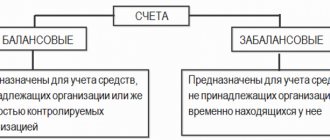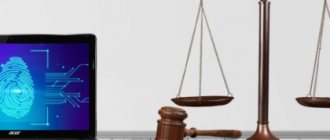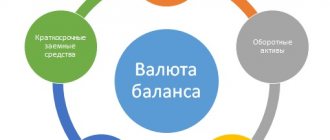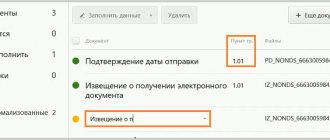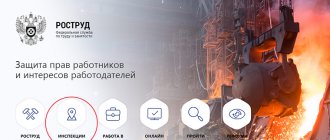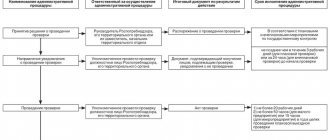Blog
Any taxpayer can assess the likelihood of including an organization in the plan of on-site tax audits.
For this purpose, there is a document describing 12 tax risk criteria.
The tax authorities' computers contain a program that automatically selects taxpayers. For example, if
- the organization has a tax burden below the industry average,
- reflects losses for 2 or more years,
- faster growth rate of expenses than income,
- payment of an average monthly salary below the average level,
- failure to provide explanations for notifications from tax authorities,
- repeated deregistration and registration in different regions (IFTS),
- conducting financial and economic activities with a high tax risk (use of counterparties to shell companies, a chain of counterparties to minimize taxes), etc.
12 tax risk criteria
Related course
Advanced accountant
Find out more
Criterion No. 1: The tax burden is lower than the average tax burden for other organizations (entrepreneurs) in a specific area of trade or production. The tax burden is the ratio of the amount of all taxes paid to the organization’s revenue (excluding VAT). Indicators of the tax burden can be viewed on the website of the tax authority and download the tax passport of each region. Sections 9 and 10 of this document contain data on the tax burden.
Criterion No. 2: For two or more years, the organization shows a loss in its accounting and tax reporting.
Criterion No. 3. The share of value added tax deductions is equal to or greater than 89% for a period of 12 months.
Example: Revenue (excluding VAT) 10 million rubles, VAT - 1.8 million rubles. The organization paid VAT to the budget of less than 100 thousand rubles - it fell into the risk zone for conducting an on-site tax audit. Why? The maximum share of deductions is 89% - in rubles this amounts to 1,602 thousand rubles. This means that in order for an organization not to fall into the risk zone according to this criterion, it must pay at least 198 thousand rubles to the budget. When calculating this indicator, the tax authority is guided by the prevailing percentage in each region. Information on the maximum share of VAT deductions can be found on the website of the tax authority.
The criterion is important for organizations that apply a general taxation system.
Criterion No. 4: Income grows slower than expenses. The growth rate of expenses outpaces the growth rate of income. The criterion is important for organizations that apply a general taxation system.
Criterion No. 5: The salary of an organization’s employee is below the average salary for a similar type of economic activity in the city, district, region or region.
Criterion No. 6: Repeated (more than 1 time) approach to the limit value of such indicators as revenue, number of employees, residual value of fixed assets, giving the right to apply a special regime. An approximation of 5 percent or less is taken into account.
Criterion No. 7: The entrepreneur for the year in the book of income and expenses reflects the amount of expenses as close as possible to the amount of income. The share of tax deductions in total income is more than 83%.
Criterion No. 8: Concluding agreements with intermediary counterparties or several intermediary counterparties without a business purpose. Creating a chain of counterparties in order to reduce the amount of accrued taxes.
Criterion No. 9: The organization does not respond to the notification (demand) of the tax authorities about the identification of discrepancies in performance indicators. Or the organization cannot explain to the tax authority the identified errors in tax returns and reports.
Criterion No. 10: If the organization has deregistered and registered with the tax authorities two or more times due to a change in location.
Criterion No. 11: The level of return on sales and assets according to financial statements deviates by more than 10 percent from the level of return on sales and assets of similar enterprises (the same field of activity).
Criterion No. 12: Conducting activities with a high tax risk. The organization conducts activities that are aimed at obtaining unjustified tax benefits. For example, the commission of facts of economic life that are not typical for the activities of a given organization or the reflection in accounting and reporting of transactions that did not occur, in order to understate the amounts of accrued taxes.
/ “Accounting encyclopedia “Profirosta” 03/24/2017
Information on the page is searched for by the following queries: Accountant courses in Krasnoyarsk, Accounting courses in Krasnoyarsk, Accountant courses for beginners, 1C: Accounting courses, Distance learning, Accountant training, Training courses Salaries and personnel, Advanced training for accountants, Accounting for beginners Accounting services, VAT declaration, Profit declaration, Accounting, Tax reporting, Accounting services Krasnoyarsk, Internal audit, OSN reporting, Statistics reporting, Pension Fund reporting, Accounting services, Outsourcing, UTII reporting, Bookkeeping, Accounting support, Provision of accounting services services, Assistance to an accountant, Reporting via the Internet, Drawing up declarations, Need an accountant, Accounting policy, Registration of individual entrepreneurs and LLCs, Individual entrepreneur taxes, 3-NDFL, Accounting organization
Publicly available tax risk criteria: regulatory framework
“Tax risks” should be understood as factors in the presence of which a business entity is likely to evade taxes (receive an unjustified tax benefit). These factors were systematized by the Federal Tax Service.
The order of the Federal Tax Service on the concept of planning on-site inspection activities dated May 30, 2007 No. MM-3-06 / [email protected] contains tax audit risk criteria: if they detect compliance with them in the activities of an enterprise, tax officials “diagnose” a likely decrease in the solvency or payment discipline of an economic entity, a possible participation in tax evasion schemes and appoint an on-site control and supervisory event.
Initially, the Federal Tax Service (in the first edition of Order No. MM-3-06/ [email protected] ) identified 11 criteria by which the economic activities of taxpayers were assessed for tax risks. But already in the second edition of the normative act, 12 tax risk criteria appeared. Since then, the number of relevant criteria has remained unchanged. Let's take a closer look at them.
Company risk management: why is verification of counterparties necessary?
Tax audits are aimed at monitoring the fulfillment by taxpayers of their tax obligations, as well as identifying violations of the tax legislation of the Russian Federation committed by taxpayers when carrying out activities. Since 2021, tax authorities have the right to verify the accuracy of information contained or newly entered into the Unified State Register of Legal Entities. In our article “Taxpayer Due Diligence in 2017-2018: Concept, Manifestation, Future Changes,” we mentioned the need for taxpayers to exercise “due diligence” when choosing a counterparty, including how to check their new and existing counterparties during avoidance of verification by tax authorities. As noted in this article, in June 2021, the Federal Tax Service of Russia again reminded taxpayers of the need to exercise due diligence and ways to verify the integrity of counterparties, approving the Letter of the Federal Tax Service of Russia dated June 24, 2016. No. ED-19-15/104. And today, for tax authorities, the main facts confirming the taxpayer’s inaction to exercise due diligence may be:
- lack of state registration of the counterparty or registration using a lost passport for an incapacitated person;
- absence of a counterparty at the specified legal address;
- submission of zero reports by the counterparty, including its failure to submit to the tax office;
- signing of documents on transactions and business operations by unidentified persons.
Let us remind you that Order of the Federal Tax Service of Russia dated February 11, 2021 No. ММВ-7-14 / [email protected] approved the grounds for tax authorities to carry out measures to verify the accuracy of information included or included in the Unified State Register of Legal Entities. Therefore, if the taxpayer refers to the absence in the current legislation of the Russian Federation of an obligation to check counterparties, in the event of a tax dispute the court will reject such arguments of the taxpayer, since every taxpayer is obliged to exercise due diligence when conducting business activities. In addition, the courts indicate that taxpayers in their activities themselves choose their counterparties and also independently enter into legal relations with them, which is why the taxpayer should exercise such a degree of care and prudence that will allow him to work only with reliable and conscientious counterparties, and such work should not lead to a violation of the tax legislation of the Russian Federation (see Resolutions of the AS of the West Siberian District dated May 31, 2021 No. A75-10708/2015, Ural District dated May 27, 2021 No. A07-9933/2015, North Caucasus District dated May 25, 2021 No. A53-15222/2015). Thus, without exercising due diligence and checking its counterparties, the taxpayer risks being denied VAT deduction and tax expense accounting.
Special systems and open sources
Risk management system (RMS) ASK NDS-2 . The operating principle of this program is based on identifying taxpayers who evade VAT, including potential “fly-by-night companies.” The ASK VAT-2 program analyzes connections with such companies of other taxpayers. For example, RMS ASK VAT-2 automatically divides taxpayers into three categories:
- with low tax risk (when the taxpayer pays VAT, has no relationships with potential “one-day companies”, and also has his own funds to carry out activities);
- with average tax risk (those taxpayers who, for one reason or another, do not fall into the category of taxpayers with low tax risk);
- with a high tax risk (taxpayers who do not pay VAT, or pay it in a minimal amount, have relationships with potential “one-day companies”, and do not have their own funds to conduct activities).
Thanks to the ASK VAT-2 program, it became possible to identify VAT gaps in the chain of counterparties, and information about the chain of owners of the counterparty, including beneficiaries, also became available. Such a search is carried out automatically based on information from the taxpayer’s reporting compared with the data of the taxpayer’s counterparties. If there is any discrepancy in the chain of counterparties, the program automatically sends a request to such company to provide appropriate explanations. We also talked about the work of the ASK VAT-2 RMS program in our article: “How the ASK VAT-2 program identifies “discrepancies” and “gaps” in VAT. Chains of counterparties: why don’t they work anymore?
"Manual" analysis. In this way, the tax inspectorate identifies transactions performed by taxpayers with the aim of obtaining unjustified tax benefits. In particular, “manual” analysis allows you to:
- search for “problem” counterparties in the chain;
- identification of controlled entities subject to a simplified taxation system, including identification of signs of artificial fragmentation.
The information base of PIK “Odnodnevka” is a special register of legal entities, with the characteristics of anonymous structures. Using this database and information about the taxpayer’s counterparties, the tax inspector can track the entire chain or specific counterparties of interest to him, and check transactions on them. All actions of inspectors using the PIK “One-Day” database are carried out to identify “one-day companies” in the taxpayer’s tax relations. After identifying “one-day companies” and analyzing the transactions made with them by the taxpayer, the tax inspector calculates the approximate amount of tax subject to additional assessment.
The program for checking counterparties "SPARK" - developed by Interfax CJSC, this program is designed for risk management. It is used to check counterparties, analyze potential (future) counterparties for the complete management of financial and tax risks. The information base of this program was formed on the basis of many data sources, including the Federal Tax Service of Russia and even the Supreme Arbitration Court of the Russian Federation. The main features and advantages of the SPARK counterparty verification program:
- checking and assessing the risks of the counterparty, including the duration of the activity, the presence of accounts payable, checking the address of the counterparty for mass distribution, the number of changes in management, etc.;
- compilation of ready-made lists of unreliable and unscrupulous companies that do not provide tax reporting, including those with debt to the budget, the level of its solvency;
- information about the potential counterparty’s intentions to make changes to its constituent documents, provided on the basis of a request to the Federal Tax Service inspection;
- relevance of information due to regular updates of the program;
- obtaining comparative analysis;
- list of companies undergoing bankruptcy proceedings;
- quick search for relationships with dubious taxpayers;
- checking the counterparty in the Unified State Register of Legal Entities by TIN number, generating an extract from the Unified State Register of Legal Entities in relation to the counterparty;
- obtaining information about the credit history of legal entities and individuals participating in the transaction.
Of all of the above, the program for verifying counterparties “SPARK” has much greater functionality, which allows tax authorities to see literally through each counterparty. Using data from these systems, the tax authority builds a diagram of a group of interconnected persons. This way it becomes clear which direction to move. Having identified connections, the inspector begins to analyze open sources of information: the company’s website, social networks, articles and publications in online publications. Here the inspector wants to find the phrases “Group”, “Holding...” and other information that directly or indirectly indicates the interdependence of the entities and/or their control by one person. Business owners, for the most part, are ambitious people, so there are large detailed articles in the vein of “I invested the last 10 thousand dollars, and now this is a group of companies with a turnover of 1 billion.” Not unusual. Information, for example, about the amount of revenue of a successful businessman, about the status of “the official representative of such and such a brand in the Russian Federation” in the absence of direct import, as well as the list of company employees, large contracts, etc. can become dangerous.
Tax risk criteria: updating
The Federal Tax Service updates the indicators that use the considered criteria for assessing tax risks annually. Key types of such indicators include the tax burden and industry average profitability. The taxpayer can compare them with his own indicators, and if he notices discrepancies, he will have reason to expect increased attention from the tax authorities.
The Federal Tax Service, as a rule, informs taxpayers about the fact of updating certain indicators according to risk assessment criteria at the end of the year - for which average industry statistics are collected. The criteria for tax risks (on-site tax audit, as a result) for 2021 are still being prepared. But it is legitimate to consider the previously calculated indicators for 2021 to be sufficiently relevant. They are available on the website ]]>department]]> in the form of an Excel table.
You can also download data for previous years. Statistics prepared by the Federal Tax Service by industry are presented in the form of appendices to order No. MM-3-06/ [email protected] Thus, the regulatory act itself, which establishes the criteria for tax risks, is essentially updated each time.


